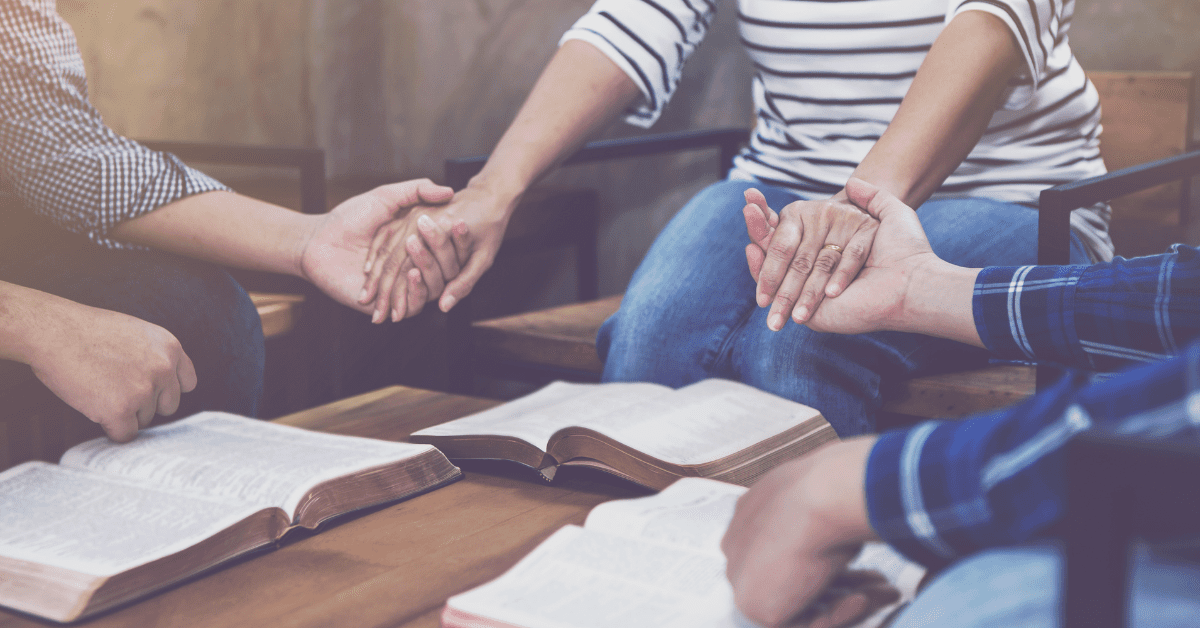A couple of months ago I was facilitating a seminar about hope and anger in rural Christian liturgy, and during the course of the event one of the participants asked about conflict and reconciliation in rural church communities. I admitted that of course I didn’t have a magic bullet, but there is some theological unpacking to be done in this. I asked the room how many folks present had experience living in rural or small-town areas, and nearly every hand raised. A lifelong rural person myself, I then asked a question for which I had a suspicion of an answer:
“How many of you, in order to preserve the vitality of your church community, have felt like you’ve needed to ignore or look away from at least one significant conflict in the community?”
Knowing chuckles filled the room, and nearly every hand raised again. Why is this? How can forgiveness and reconciliation take place if the difficult process of letting them unfold seems so often at odds with “keeping the peace” in a church community? This is not a rhetorical question. I’d like to suggest that this impulse to keep the peace—specifically to continue worshiping as a whole liturgical community even when there are conflicts within it—can be a powerful catalyst for reconciliation when the work of forgiveness and atonement takes time to develop, and it finds its ground in what the liturgical assembly is and does.
Communal effects of wrongdoing
We can often conceive of forgiveness and reconciliation as primarily something that takes place between two particular persons. One person wronged another, and so apologies, repentance, and reparations of some kind need to take place between those two persons in order to open the possibility of a just forgiveness (for more on this, the work of Margaret Farley tends to be quite helpful).
However, if a relationship between two persons has been injured, that injury rarely stays only between those two persons. Particularly in rural communities, where so often “everyone knows everyone,” the life of the community shares in the injury between persons. One doesn’t need to be party to the breaking of a relationship in order for that brokenness to affect the atmosphere in the sanctuary, at the church coffee hour, in Sunday school, at youth group, and in any number of other aspects of shared church life. Add to this the overlapping spheres of social life in rural communities (for example, there was a time in my current hometown of 1600 people when a local pastor was also the mayor and additionally worked at the post office), and the stakes in broken relationships tend to be quite high.
There are good and holy reasons then, to spend significant time and energy figuring out how to work through the processes of atonement, forgiveness, and reconciliation when relationships are injured in rural church communities. In a way, the social fabric of rural church communities can sometimes (though not always) be thought of as 1-ply: if the fabric of the community tears, it can tear all the way through, and so repair of the community’s fabric is connected to its very survival and vitality.
A common mistake though, tends to be to think that such processes of atonement, forgiveness, and reconciliation should unfold quickly—just as soon as everyone understands what happened and what needs to be done about it. In a cultural context that often values ease of access, efficiency of processes, and immediacy of results, the necessity of letting time pass—allowing space for slow, deliberate healing—can feel unwelcome, burdensome, and in some cases even overly prone to drama. Folks rarely relish having to remain in the discomfort of unresolved tension, but this is the exact place where the liturgical assembly can act as a balm.
Holding time and space
When a community gathers for worship, social collisions of many kinds can take place. Some are good and healthy (reconnections between friends, upbuilding of relationships in shared activity), and others can be tense or even toxic—particularly if there are unresolved conflicts or wrongs between members of the community. The liturgical assembly itself however, by the very act of assembling, holds a shared communal space that includes and yet transcends these collisions. This does not mean that every liturgical assembly is somehow idyllic and immune to the effects of sins between members; quite the opposite.
It means that the community itself holds space within which lacerated relationships may scar over or be sutured in a healing process—a painful, but often necessary attention to an injury. The alternative tends to be to ignore an injury, in which case it can fester, and at that point will turn toxic for the church body who has assembled. The point I’m trying to make is this: if the injured parties are nevertheless still able to join in the worshiping assembly, without pretending the injury does not exist, the act of assembling itself can mediate a social vitality that can aid in healing broken relationships without rushing to reconciliation.
Such aid can take any number of forms. Joining together in a hymn while the person who vexes you belts out “A Mighty Fortress” from two pews back doesn’t magically fix things between you two, but it creates shared space where you don’t have to be focused either on fixing the relationship or pretending everything is okay. Receiving the cup while hearing the ritual words “this is my blood, shed for you” spoken by someone embroiled in a conflict does not magically dissipate the conflict, but it places the conflict in the context of a community receiving the outpouring of God’s love and mercy. Sharing the peace even when one does not feel peaceful relocates one’s emotional and mental state into the shared space of a fellowship of sinners walking through the life of discipleship, struggling and striving to follow Christ together. In a word, assembling for worship does not fix conflict and sin, nor should it try to force forgiveness and reconciliation; instead, it holds shared space and time within which the (sometimes long) process of healing may unfold. Such healing is never a guarantee, but the worshiping assembly nevertheless mediates a prime place of blessed waiting for such healing to manifest, a place where God has promised to be present, even and especially among those who have transgressed against one another. God forgives us our sins, as we forgive those who sin against us.
Your turn
Reflect on how your church community has survived past conflicts. Did folks leave, estranged from the community, or did the community heal with nearly all of its members still able to find a loving home in the church’s life? What did the community do with its worship that helped or hindered the process of navigating the conflict? Think of a time when you felt welcomed and/or supported by a community through a conflict of your own. What made that support real for you?
Consider submitting prayer requests (for the community prayers/prayers of the people) that petition for healing of injuries to relationships without naming particular wrongs or persons. Crafting these petitions carefully can be a powerful way of giving voice to the space we hold together for encountering Christ and each other.




